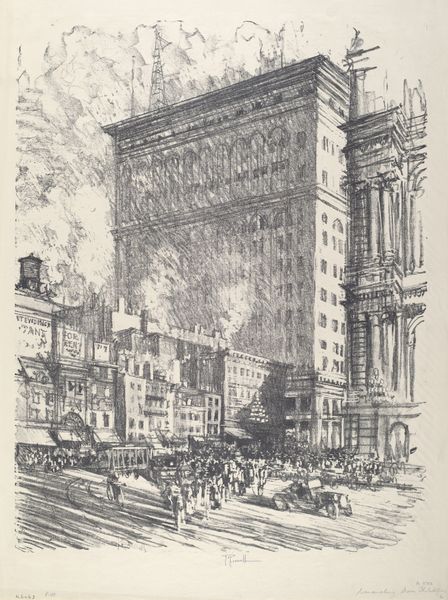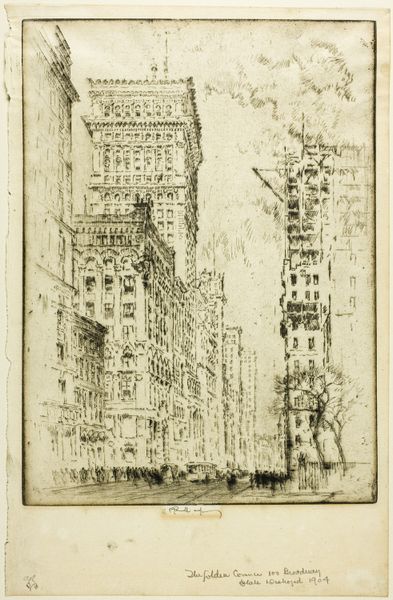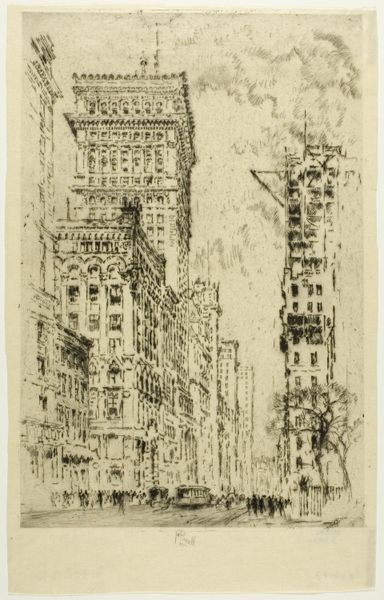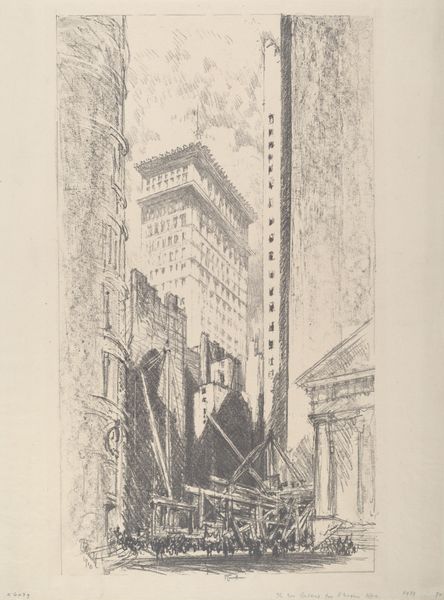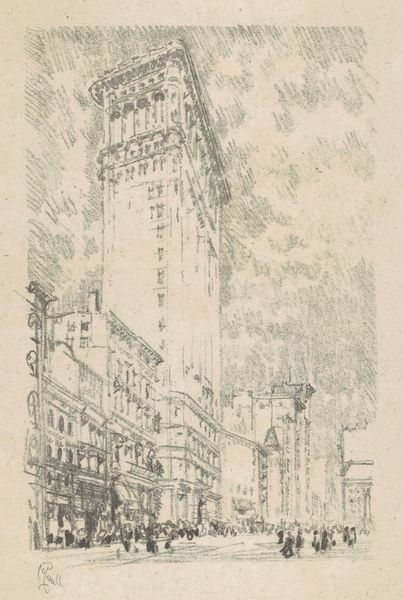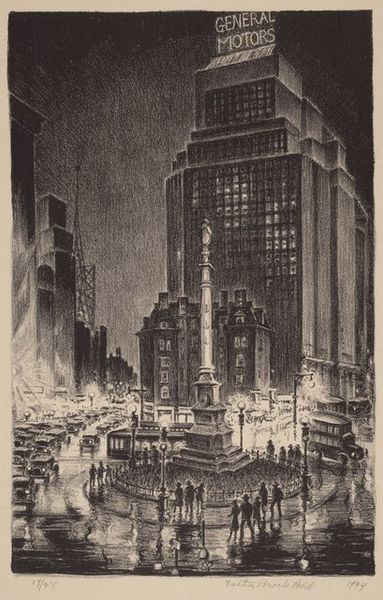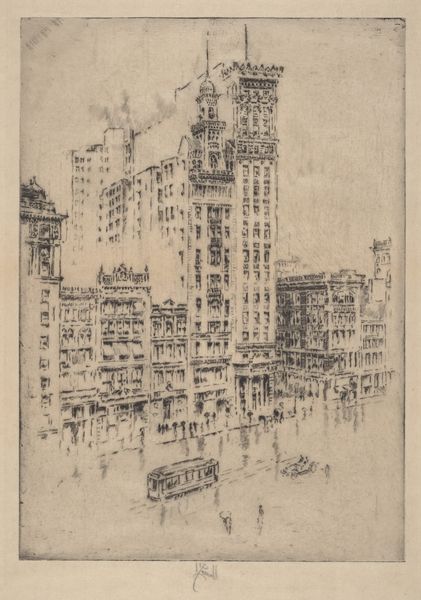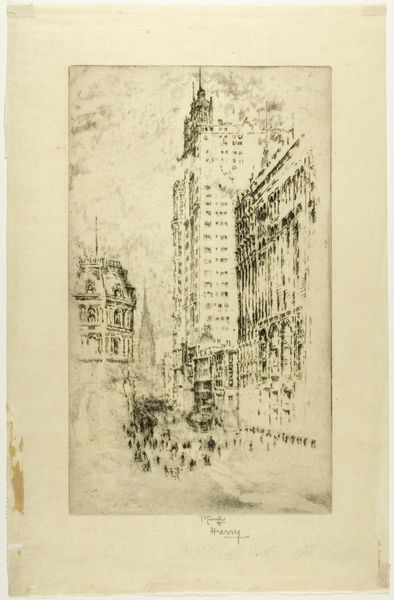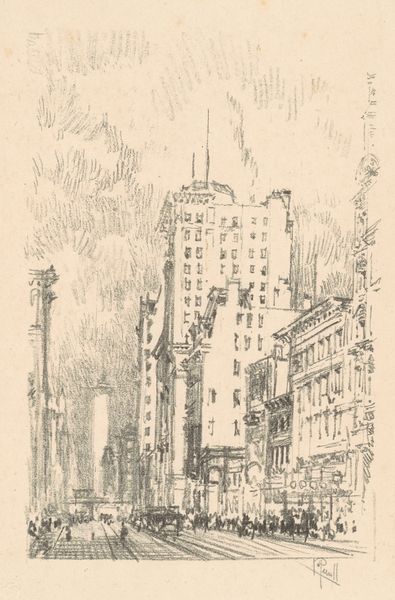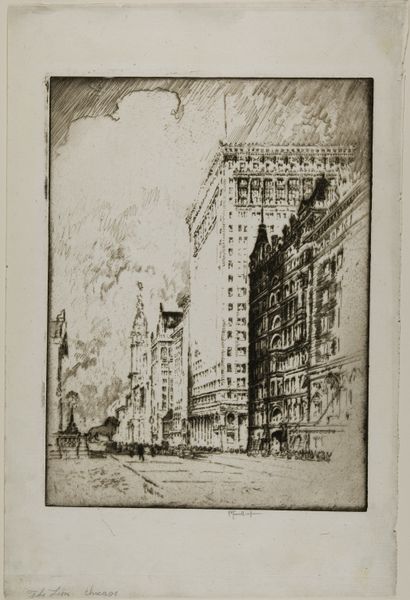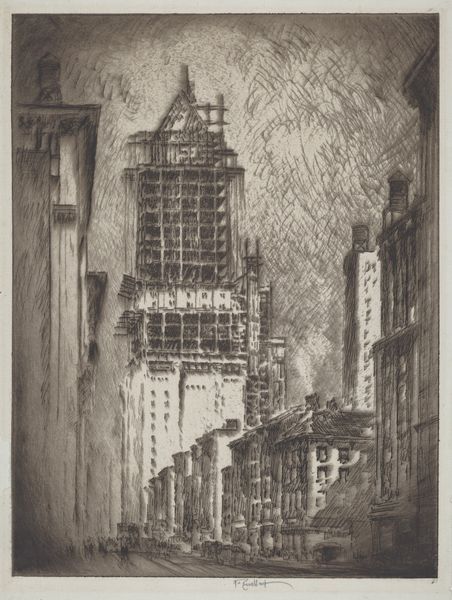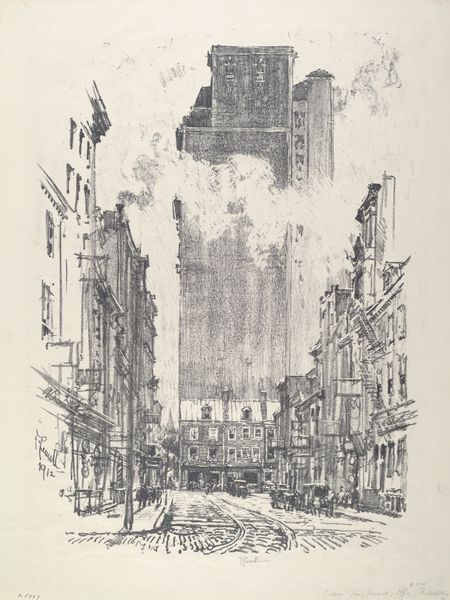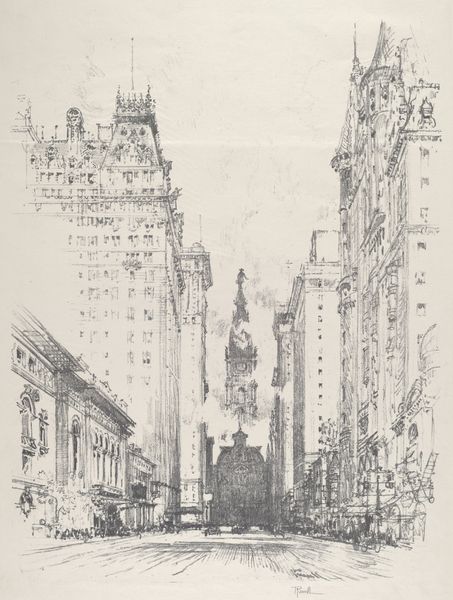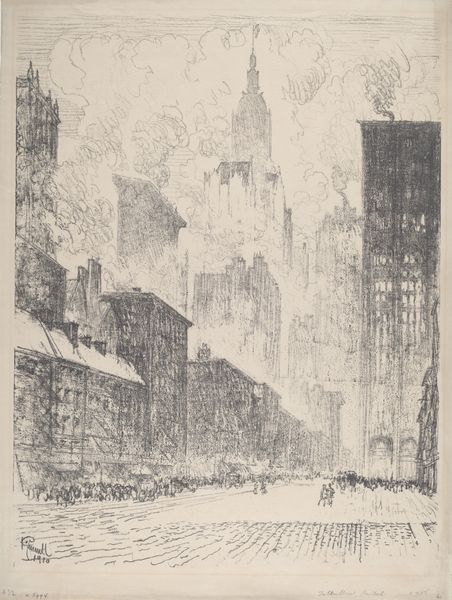
print, etching
# print
#
etching
#
ashcan-school
#
cityscape
#
realism
Copyright: National Gallery of Art: CC0 1.0
Curator: Joseph Pennell's 1912 etching, "The Union League," captures a vibrant cityscape bustling with life. The print embodies a raw, realistic aesthetic that aligns with the Ashcan School. Editor: It's immediately striking how Pennell uses line weight to suggest depth and atmosphere, all in muted tones. There’s a wonderful tension between the sharp details of the architecture and the almost blurred movement in the streets below. Curator: Precisely. The towering buildings evoke both power and the alienation characteristic of modern urban life, a recurrent theme in early 20th-century art. One might interpret the steam rising atop the central building, perhaps the eponymous League, as a symbol of industry or maybe a deeper turmoil? Editor: The composition is fascinating, isn't it? He directs our gaze upward along those vertical lines, but then horizontally, mimicking the movement of crowds. And those sharp diagonal lines add this undeniable tension. Is this just representation or does the structure become a psychological metaphor for societal friction? Curator: I believe that this representation of modernity touches on societal shifts and the experience of navigating increasingly complex environments, both culturally and psychologically. The teeming crowd can suggest democratic engagement or, perhaps, the threat of unrest. Editor: I'm not sure it lends itself to social unease alone. To my eye, it presents a formal elegance through the rigorous layering of space and mass. It feels distinctly modern not just in subject matter but the artist's engagement with rendering perspective itself, reducing the street-level chaos to an arrangement of graphic gestures. Curator: Yet the choice of subject—a social club set amidst such energetic streets— hints at the stratified nature of society, even while it depicts dynamism. It reminds us that urban space is not passively viewed; it's lived, contested, and imbued with social and historical significance. Editor: You've drawn me in. What began as pure formalism for me reveals something else – the etching feels almost photographic in its immediacy while constructing this careful geometric play. I do feel the weight of Pennell’s gaze on this emergent city. Curator: For me, looking closely, the image presents us with something of a puzzle concerning individual agency and social transformation at a pivotal time. Editor: Thank you, those interpretive directions changed my vision to consider symbolic depth in the matrix of the surface elements and textures!
Comments
No comments
Be the first to comment and join the conversation on the ultimate creative platform.
